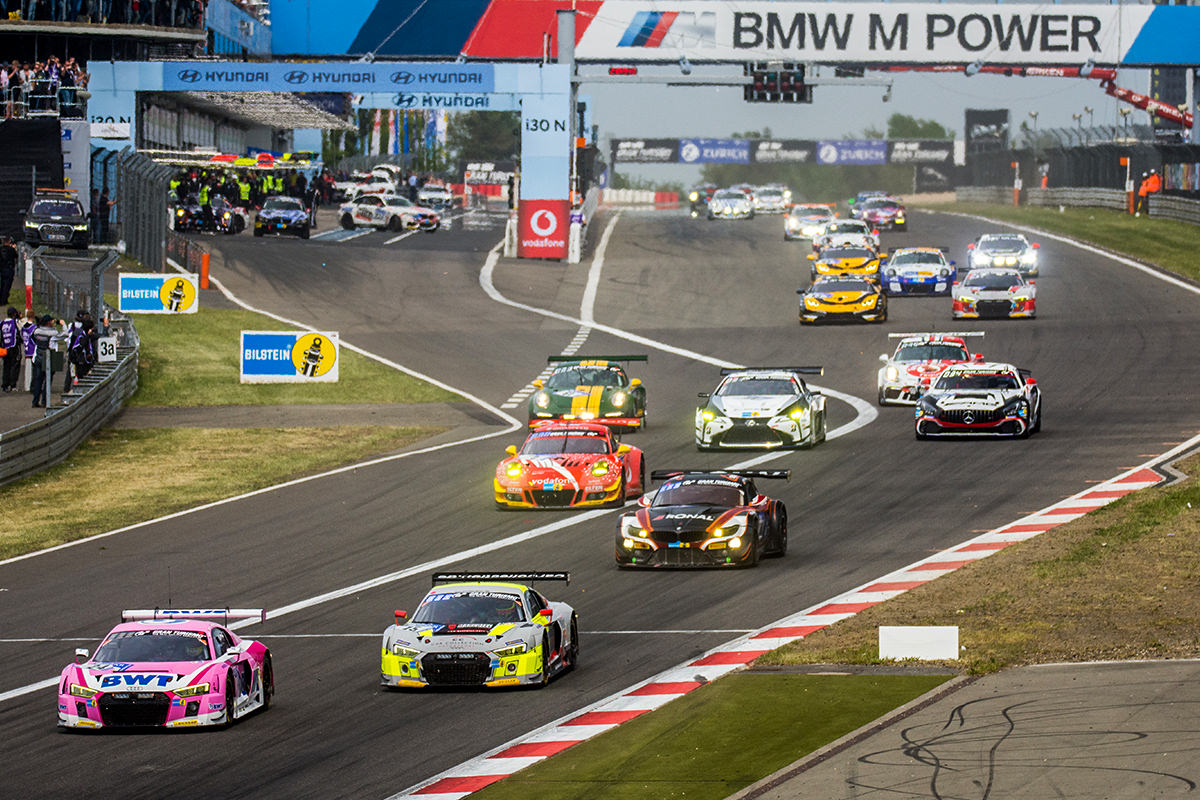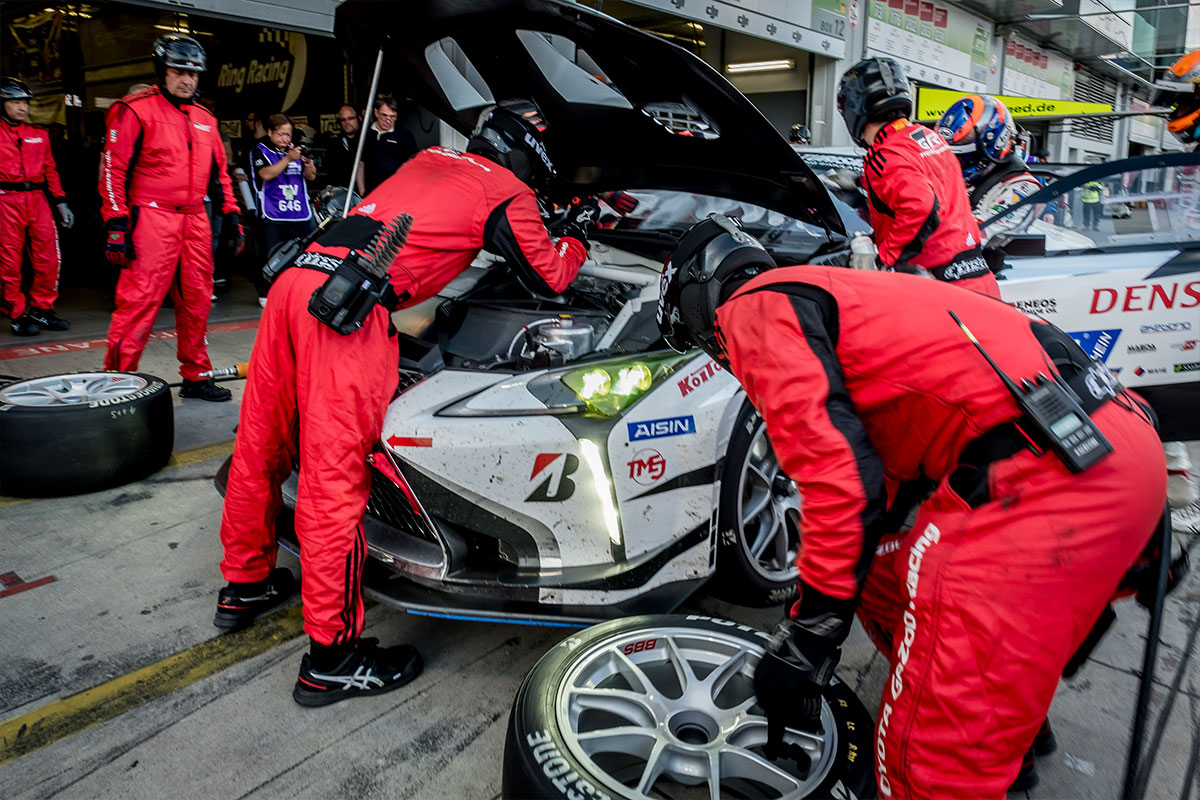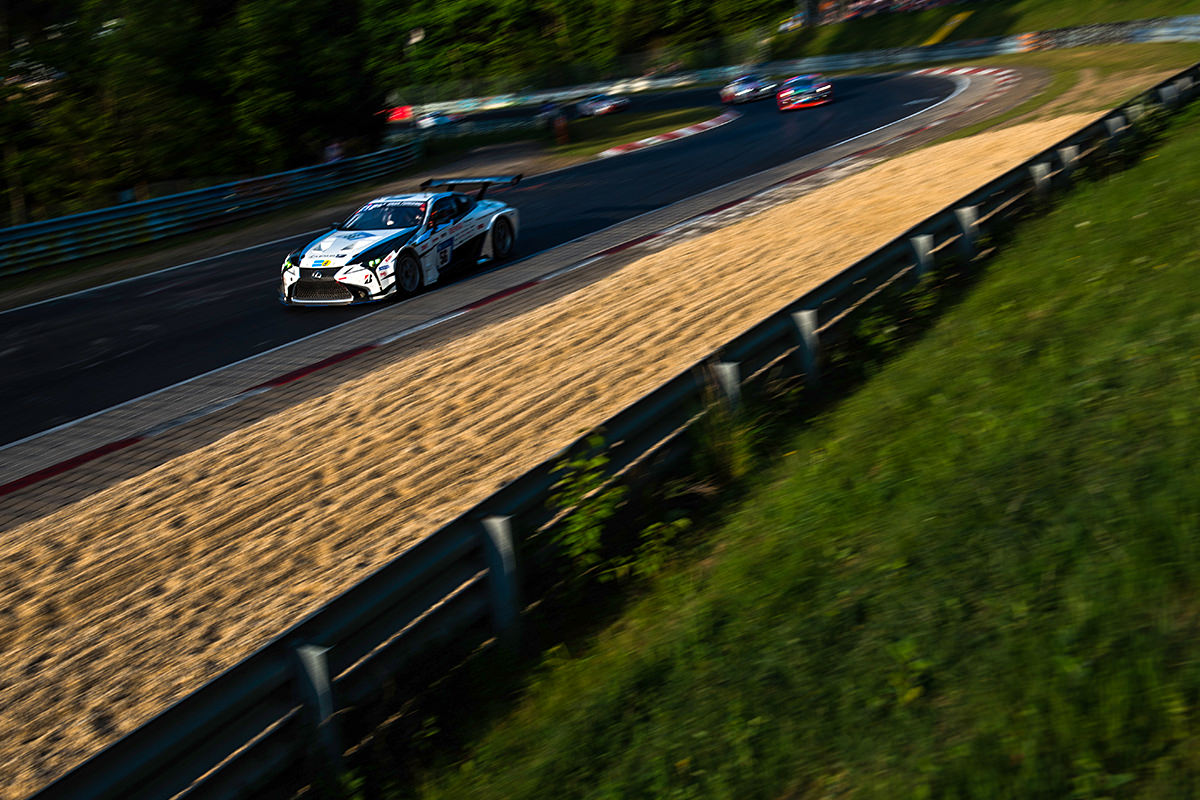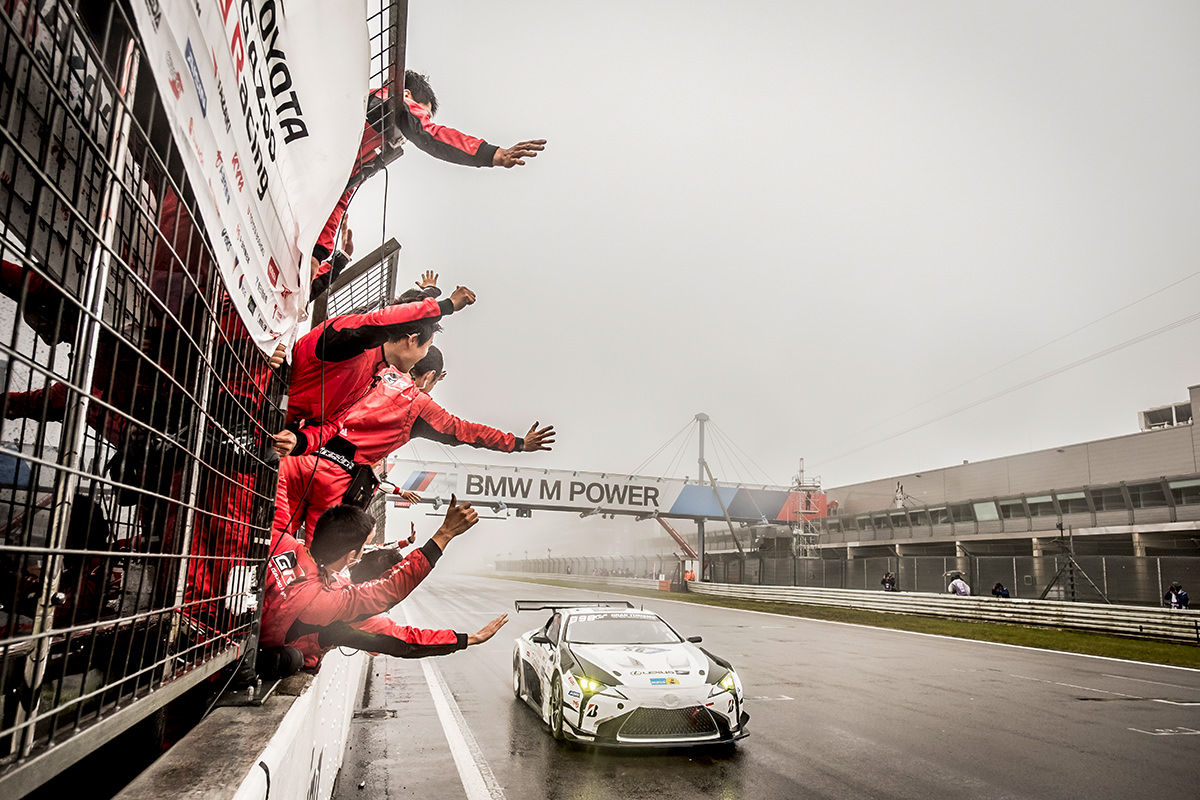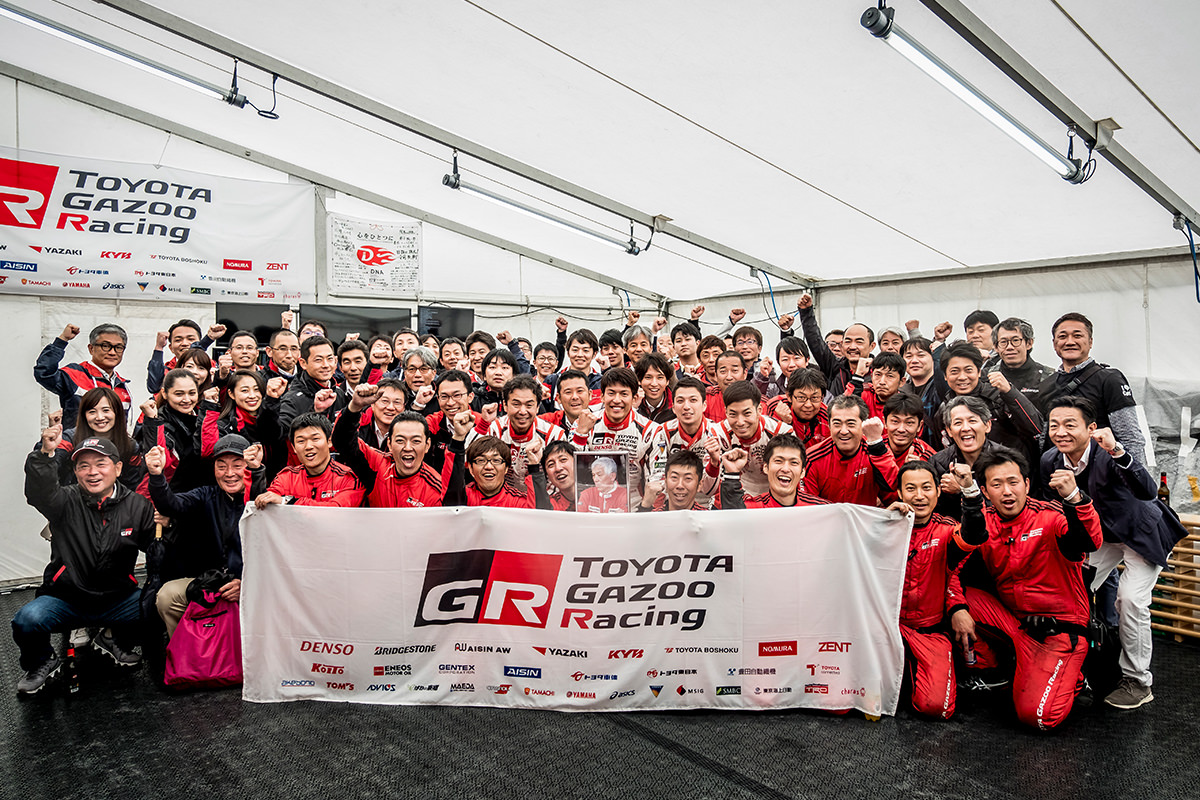24H
Course:NÜRBURGRING


2018 Reports - Vol.3 24H
“It was a race in keeping with the origin of GAZOO Racing.”
So said GAZOO Racing Company President Shigeki Tomoyama after the Lexus LC completed the 24 Hours of Nürburgring. It was a succinct summary of the TOYOTA GAZOO Racing Team’s challenge at this year’s event.
TOYOTA GAZOO Racing team entered the Lexus LC in the 24 Hours of Nürburgring for the first time this year. To making from scratch a car that is able to run for the full 24 hours at the Nürburgring in safety and at speed is an extremely arduous challenge; this year, the team also incorporated advanced technologies into the body, aerodynamics, engine, and suspension of the vehicle, that will be utilized in future production cars. Since the car had been made from scratch without any data base, the team was curtsied by drivers at the shakedown in Japan as: “This car is a far from racing car.”
Subsequently, the Lexus LC completed approximately 6,000 kilometers of testing in Japan, as well as approximately 2,000 kilometers of testing at the Nürburgring—including April’s qualifying race which the team used as a practical test. Of all the cars that the team had entered thus far in the 24 Hours of Nürburgring, the Lexus LC had completed the greatest pre-race distance and accumulated large amounts of data. The mechanics and engineers implemented rapid improvements to the problems that were identified at each test.
And yet it was not just the 24 Hours of Nürburgring itself—by building cars from scratch, the team was able to learn how to make ever-better cars that would perform as desired by the drivers. In this way, competing in the race led to the refinement of both people and cars.
The results of the team’s efforts were evident in chief driver Takeshi Tsuchiya’s comment after the qualifying race: “Having completed two races, I can feel the steady progress of the car.”
On the other hand, there were still many things left to do before starting the 24 Hours of Nürburgring. The team wanted to develop the Lexus LC into a car about which the drivers would say “It enables us to drive with satisfaction at the Nürburgring” and “I want to keep driving it at the Nürburgring.” To this end, the engineers returned to Japan and utilized driver feedback to manufacture updated parts; the mechanics, meanwhile, remained in Germany, and carried out further improvements in preparation for the race itself.
The first day of qualifying took place on May 10. With Takamitsu Matsui at the wheel, the Lexus LC recorded a time of 8 minutes 49.289 seconds, ultimately qualifying for 34th place overall. However, Matsui did not look particularly pleased.
Takeshi Tsuchiya reported: “The car is steadily improving, but it is still far from the finished article. If our goal is to complete the full 24 hours, a number of worries remain—we will have to solve every single one.” At the end of the day’s running, the drivers, engineers, and mechanics gathered together with the aim of pursuing fundamental resolutions; they decided to try out their improvement measures on the second day of qualifying.
On the second day of qualifying, the team made changes to the car—adjusting its suspension, for example—between its runs in preparation for the race and managed to resolve some of the problems that surfaced on day one. However, the Lexus LC finished the best time of 8 minutes 34.591 seconds, the overall resulted in 31st place; in the 24 Hours of Nürburgring, finishing qualifying among the Top 30 is demonstration of being one of the fastest cars—the Lexus LC missed out by a single place.
“We are disappointed of the result, but this is what we are currently capable of. The race itself is long, and it is our aim to compete to the end without losing concentration.” Chief mechanic Toshiyuki Sekiya refocused his energies on the team’s goal in the 24 Hours race itself.
The true value of the team’s car making would be tested in the 24 Hours of Nürburgring. There was unexpected drama on the opening lap, when the Lexus LC’s front-left tire came into contact with another vehicle. While the LC was able to continue with minimal impact on its performance, this was just the start of the team’s tribulations.
An hour and a half after the start of the race, the Lexus LC was running in about 35th position. Suddenly, the driver reported over the radio that “there’s something wrong with the brakes” and came in for an emergency pit stop. The mechanics swiftly identified the problem to be the brake hose routing, replaced the parts in question, and the car returned to the course.
Brake issues can often turn out to be terminal, but thanks to the accurate judgment of the driver it did not become a major issue during the race. The cause of the problem came about from coming in contact with another vehicle immediately after the start, altering the condition around the rear brake, but this was the moment that it was realized that unexpected trouble was also liable to flare up at the Nürburgring.
The Lexus LC suffered a slow puncture to one of its rear tires, but it otherwise continued to run smoothly. Then one of the drivers reported, “the gears are making a loud noise, there is resistance, and acceleration is reduced,” and pitted. The team determined that the transmission would have to be replaced, and set about carrying out the required work.
As it happens, the Lexus LC had displayed transmission issues during the testing in Japan as well, and the team thought they had come up with a solution. The Nürburgring proved otherwise and highlighted the issue as an area of weakness.
The team spent approximately two hours replacing the transmission, before sending the car back out to return to the course. The sun had already set, and the race was into its night session.
The date changed, and around 2am it started to pour with rain. The rainfall was extremely heavy, and the surface conditions were such that running was difficult even on wet tires. There were a number of crashes and numerous cars strayed off course. Then, the driver said: “The engine is not accelerating properly.” The Lexus LC pitted, the team diagnosed and repaired the fault, and the car returned to the course.
However, at around 5 am, just as day was beginning to break, another message came over the radio, “the engine isn’t working well,” and the car returned again to the pits. As the rain had worsened, water droplets had entered the air intake ducts and obstructed the inflow of air to the engine. After replacing the necessary parts, the team once again released the car back into the course.
Immediately after rejoining the race, however, the driver’s voice was again heard over the radio: “The engine has cut out and the car has stopped.” Since the car had stopped on the Grand Prix Course, close to the pit area, the Lexus LC was quickly towed back to the pits.
The cause of the problem was water penetration due to unexpectedly heavy rainfall. Although the team had just repaired the car, the water was now impacting on parts even deeper inside the car. The mechanics used tape to seal up the top half of the spindle grille—one of the distinguishing characteristics of the LC—in an effort to prevent water from entering the air intake ducts. Before the race, Chief Mechanic Sekiya had said: “One of my worries is that we have been unable to carry out wet tests before the race.” This is how the Nürburgring made the weak points come to light.
After fixing such issues with the car, Chief Mechanic Sekiya said: “The LC is a new model, and it incorporates new technologies in a trial capacity; so, we carried out development on the car at an earlier stage than normal, and we carried out more tests than ever before: this is the present state of affairs. Having said that, it is important that the young mechanics and engineers gain something from their experiences of facing and overcoming these issues. I believe it has been a great learning experience for them.”
Indeed, one of the engineers highlighted the significance of car making at the Nürburgring: “One of the parts which malfunctioned during the race had previously been thought reliable; however, problems arose in the severe conditions of the Nürburgring. In other words, the Nürburgring is able to subvert even past achievements. While we are disappointed, if we take this to our advantage in the future, it must be a good experience.”
After overcoming the last of its troubles, the Lexus LC completed the rest of the race without incident. The race was interrupted from noon for two hours due to dense fog, but at 3:30pm on May 13, the Lexus LC took the checkered flag.
Lead engineer Kazuyoshi Ogata said with tears in his eyes: “Although there were many disappointments, we also managed to learn a great deal. None of the engineers believe that this is the end. We intend to link this experience into making ever-better cars in the future.”
Chief Mechanic Sekiya said: “I am disappointed, but I have no regrets. In recent years, we managed to perform smoothly even in the 24 Hours race itself, and we recorded strong results. This year’s race reminds me of the situation between around 2008 and 2011 when, even though we completed our tests without any issues, we suffered problems at the Nürburgring itself. However, we will not allow this project to end in failure.”
Worried about the team, Tomoyama, president of the GAZOO Racing Company, had visited the pits on numerous occasions during the race. “During the race, sometime I had no idea what is going to happen for a while—I am just glad that we managed to complete the race. In the end, the Nürburgring is extremely testing for a machine competing for the first time. Our first-time participation in 2007 was also a case of the car breaking and being fixed over and over again. In that sense, this year—which was our 12th year at the race—was in keeping with the origin of GAZOO Racing. What is important is that we learn from this year’s race. It is my hope that each member of the team draws up new goals and progresses forwards.” The meaning behind TOYOTA GAZOO Racing’s entry in the 24 Hours of Nürburgring remains unchanged since 2007: overcoming various troubles, learning from them, and using the experiences as motivation for the making of ever-better cars.
The Lexus LC completed 97 laps and finished in the 96th place overall. Despite the unsatisfied result, the team learned a great deal.
Only after coming to the Nürburgring were the mechanics able to understand the exact reason why the drivers had been so harsh in their evaluations of the Lexus LC. Driver runs at their own risk at the Nürburgring—in order to do this, it is vital that they trust their vehicles. Even minor issues lead to reduced concentration on such a harsh course. If a car can be driven safely at the Nürburgring, then the car will be able to drive on any road around the world. The experiences of the team mechanics will no doubt come to the fore in the development of future production cars.
The mission of the engineers, on the other hand, is to adapt the technologies used in the Lexus LC so that they can be fed back into future production cars. By incorporating the Lexus LC with advanced technologies—which will be utilized in future production cars—at the 24 Hours of Nürburgring, which is the most trying test course in the world, the engineers gained their knowledge and paved the way for the use of these technologies in the development of future production cars.
Competing in the 24 Hours of Nürburgring does not mark the finishing-point of making ever-better cars. Quite the opposite: it is the starting-point.













